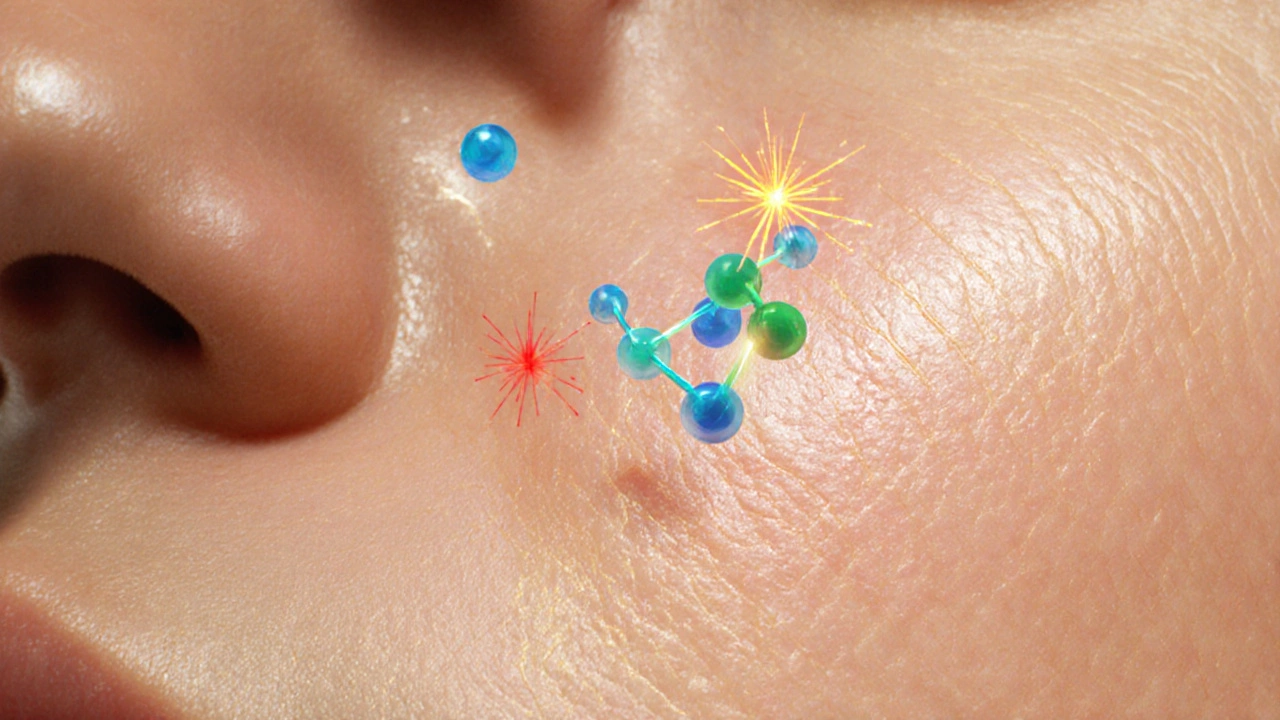Hyperpigmentation – Understanding Dark Spots and How to Treat Them
When talking about hyperpigmentation, the darkening of skin caused by excess melanin production, often after injury, sun exposure, or hormonal changes. Also known as dark spots, it affects many Indian readers who notice uneven tone on the face, hands, or body. Recognizing the root causes lets you choose the right fix, whether you prefer creams, procedures, or natural herbs.
One major subtype is melasma, a hormonally driven patchy darkening, common among women using birth control or during pregnancy. Another is post‑inflammatory hyperpigmentation (PIH), which shows up after acne, eczema, or even minor cuts. Both rely on the same melanin pathway, but the triggers differ, so treatment plans must be tailored.
How Lifestyle and Sun Exposure Fuel Hyperpigmentation
Sunlight is the biggest external driver. UV‑A and UV‑B rays stimulate melanocytes, the cells that make melanin, leading to spot formation. In India’s sunny climate, neglecting sunscreen can turn a small sun‑kissed patch into a stubborn stain. Besides sun, diet matters—high‑glycemic foods and certain spices can spike insulin, which indirectly boosts melanin. Simple habits like daily SPF, wearing hats, and balancing meals can curb new spots before they anchor.
When you look for a quick fix, many turn to over‑the‑counter brighteners like hydroquinone or niacinamide. These work by inhibiting tyrosinase, the enzyme that converts tyrosine into melanin. Clinical studies show a 30‑40% reduction in spot depth after eight weeks of consistent use. Yet, some people experience irritation, especially on darker Indian skin, so a patch test is a must.
That’s where herbal supplements, plant‑based extracts such as licorice, mulberry, and vitamin C that target melanin pathways from the inside step in. A 2023 Indian dermatology trial found a daily blend of these herbs reduced PIH scores by 22% compared with placebo. The advantage? Fewer side effects and a gentle, long‑term approach that complements topical creams.
Another popular natural ally is Aloe vera, a gel‑rich plant known for its soothing and antioxidant properties. Its polysaccharides inhibit melanin synthesis while calming inflammation, which helps prevent new PIH after acne eruptions. Applying fresh gel twice a day can halve the visible darkness of fresh spots within a month.
Ayurvedic medicine, a traditional Indian system that uses herbs, dietary rules, and lifestyle routines to balance skin health offers several formulas aimed at hyperpigmentation. Ingredients like turmeric, sandalwood, and saffron contain natural tyrosinase inhibitors and antioxidants. When integrated with modern sunscreen habits, Ayurvedic routines often speed up fade‑out time for stubborn melasma.
Professional procedures still have a place. Chemical peels (glycolic or salicylic acid) accelerate skin turnover, revealing fresher layers beneath. Laser therapy—particularly Q‑switched Nd:YAG—breaks down melanin granules, ideal for deep melasma. However, both require skilled dermatologists familiar with Indian skin tones to avoid post‑procedure hyperpigmentation, a paradox some patients face.
Putting it all together, the most effective strategy blends prevention, topical actives, and gentle natural boosters. Start with SPF 30+, add a niacinamide or azelaic acid cream, and consider a daily herbal supplement or Aloe Vera gel for inside‑out support. If spots persist, consult a dermatologist for a tailored peel or laser plan that respects your skin’s unique melanin level.
Below, you’ll find a curated set of articles that dive deeper into each of these angles—clinical studies on herbal supplements, step‑by‑step Aloe Vera applications, Ayurvedic recipes for brightening, and expert advice on laser options. Whether you’re just spotting the first freckle or battling long‑standing melasma, these resources will give you practical, science‑backed steps to reclaim an even tone.
Vitamin C and Your Skin: Benefits, Use Tips, and What to Watch Out For
Discover how Vitamin C benefits skin, the science behind collagen boost, brightening, and sun protection, plus tips for choosing and using serums safely.
